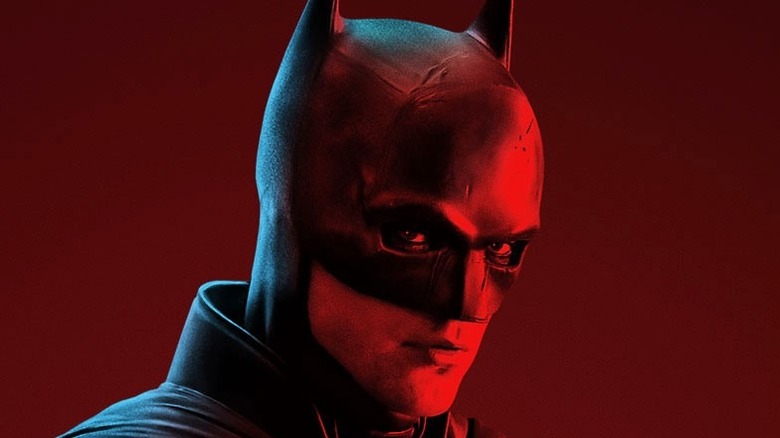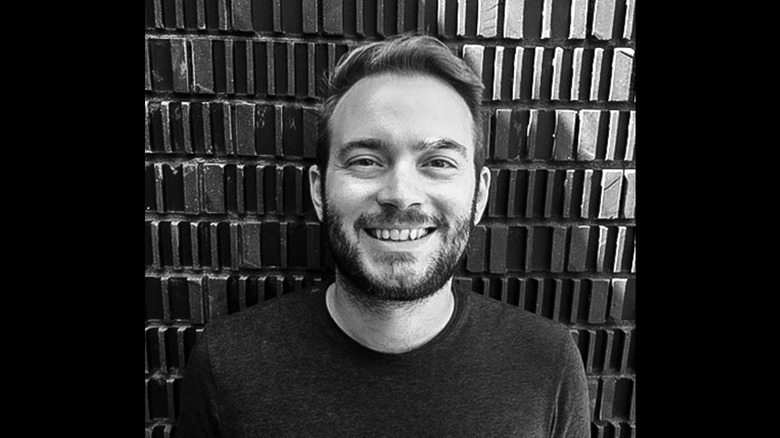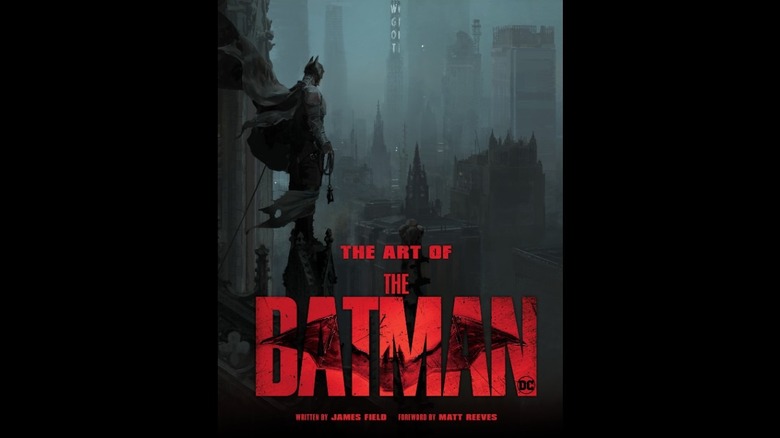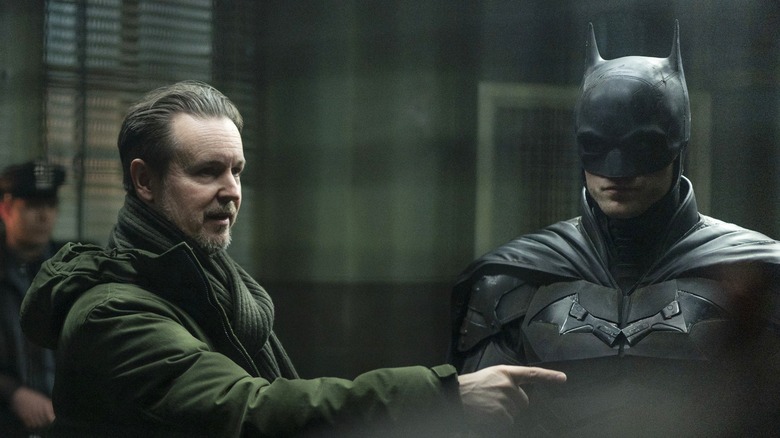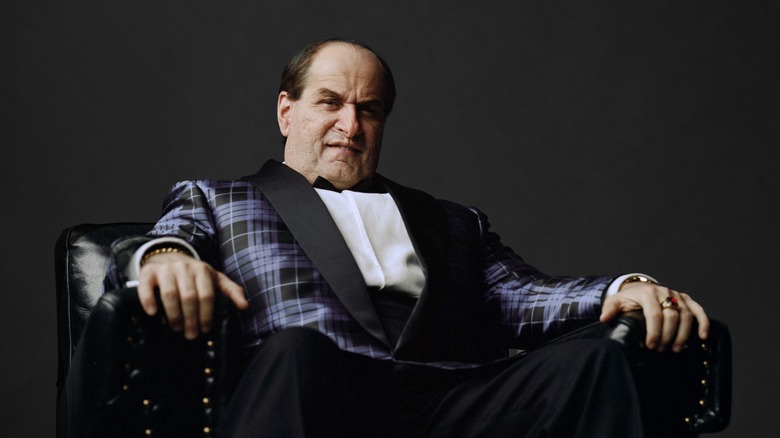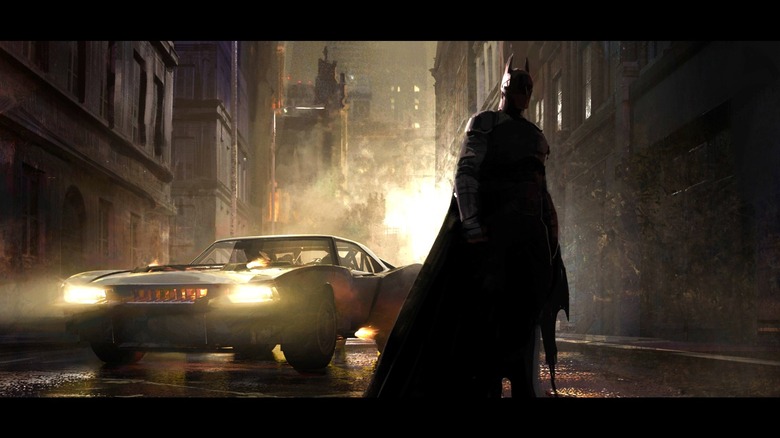Author James Field Takes Us Behind The Scenes With The Art Of The Batman - Exclusive Interview
In redefining the story of the Dark Knight — if not the superhero genre as whole — with his worldwide blockbuster "The Batman," writer-director Matt Reeves clearly showed his love for the character that dates back to the character's comic book origin in 1939.
Also passionate about the iconic DC Comics character is author James Field, who was given a front-row seat to Reeves' production to chronicle the making of the film for the new book, "The Art of The Batman" (Abrams Books). Set for release tomorrow, April 19, "The Art of The Batman" is a richly detailed account of the production that not only features concept art and photos from the production, it also includes in-depth interviews throughout with Reeves, who wrote the foreword for the book.
In addition, Field discussed the production with several principal actors in "The Batman," including Robert Pattinson (who stars as Batman-Bruce Wayne), Zoe Kravitz (Selina Kyle-Catwoman), Colin Farrell (Oswald "Oz" Cobblepot-The Penguin), Jeffrey Wright (Lt. James Gordon), and Paul Dano (Edward Nashton-The Riddler). Also, delving deep into the behind-the-scenes work on the film, "The Art of The Batman" features conversations Field had with such key creatives including cinematographer Greig Fraser, production designer James Chinlund, costume designer Jacqueline Durran, and Batsuit designers Glyn Dillon and David Crossman.
In an exclusive email interview with Looper, Field began the conversation by recalling his enduring fascination with Batman, which includes his affinity for the DC comic books, the animated series iterations of the character, and the video games. Field also expressed his admiration for the classic "Batman" television series that began airing in 1966, as well as the contemporary big-screen adaptations of the Caped Crusader's adventures, beginning with director Tim Burton's "Batman" in 1989.
A lifetime of passion for an iconic character
Congratulations on an incredibly detailed and fascinating behind-the-scenes look at "The Batman" with "The Art of The Batman." How long ago did you start working on the book? As you already know, Batman has such a rich and detailed history, so there's a lot of information to pour over before you start detailing the project.
I started on the book back in July 2021 but have been working on "The Batman" from a production perspective since December 2019. As you say, there's an incredible amount of information to pour over, but as a huge Batman fan I was more than happy to get stuck in — and it was a great excuse to dive in deeper into the character's history than I ever had before.
How far back does your love of Batman go? I would imagine you would have to have a vested interest in the material — whether it was through the comic books, the 1960s TV series, the many animated series and films, and the previous big screen iterations of Batman — in order to sign on to write the book.
I've loved Batman ever since I can remember. When I was younger, I would sit drawing made-up Burton-era "Batman" film posters, coming up with brand new stories. My brother and I watched those movies (plus the Adam West '66 "Batman" film) so regularly that the video tapes pretty much wore out. As a teenager, I started to explore the comics some more, really being drawn to the Loeb/Sale books.
My favorite of all the incarnations, though, is "Batman: The Animated Series" — it's one that properly stands the test of time and is one that I can still enjoy now just as much as I did when watching it when it played during Saturday morning TV. My love for (and knowledge of) these incarnations, plus the "Arkham" video games, was all drawn upon for the writing of this book — and a huge reason for taking on "The Art of The Batman" book in the first place.
Establishing the book's foundation
With tales of Batman being rooted in the DC Comic books, how did you begin to start making those comics part of your research? Did you have access to a script or guidance from Matt Reeves as to what specific era you should concentrate on? After all, the origin of the character dates back to 1939 — which means lots of comic books!
I was lucky enough to read the script just before production began on the film, so I had a good idea of the kind of story that was being told. Immediately, the "Long Halloween" comic book series came to mind, and then, when I was both speaking with Matt Reeves and discovering his inspiration for the film, it was fascinating to not only hear how personal his relationship was with Jeff Loeb was, but also the breadth of comics and Batman lore that had inspired his vision for "The Batman." This really helped guide the visual references and comparisons that you see in the book.
I'm sure in the course of writing the book and getting access to photos of certain props, and production artwork including art of costumes and characters, you've got to keep everything you learn air-tight until the release of the film and subsequently, the book. What were the most exciting things that you wanted to talk about but had to wait until they were revealed with the film and book releases?
During production, and in collating materials for this book, I got the chance to work with Glyn Dillon — designer of the Batsuit. Not only is he an all-round great guy, the artwork he created for this film is gorgeous — so, it wasn't just a chance to share the illustrations with readers, but to also illuminate some of the reasons and rationale behind the choices made for this particular presentation of Batman. I was also excited to showcase the beautiful art that brings Gotham City to life.
A fulfilling collaboration with Reeves
You have quite a bit of interview material with Matt Reeves in the book. At what point in the course of the production of the film and subsequently, the book did you start talking with Matt?
I was incredibly fortunate to be there in person when Matt took us through the whole story — from the very start, I've heard, first-hand, the incredible detail and passion to which he speaks about his take on the character, his vision for the world and the story he's created. Then, during post-production, as the book began to take shape, I conducted interviews with him where we could drill down into specific areas — and he was so generous with his time, especially considering how busy he was!
How inspired were you by Matt Reeves during the course of your interviews? The man is clearly an incredibly passionate filmmaker, and I would imagine your interactions influence your work.
Something I felt particularly inspired by was his understanding of, and care for, the film-loving audience — he's a film maker who wears his inspiration and passion for the art form on his sleeve. Matt talks about this at greater length in his foreword, but it was clear how important these types of behind-the-scenes/making-of books had been for him growing up and were a key part in his own journey to becoming a filmmaker, exploring and gaining insight into how all of these brilliant elements come together to create a movie that you love as a fan.
Field was taken aback by the design of Farrell's Penguin look
It's tough to ask you about your favorites and I'm okay with you saying, "All of them!" But upon learning of the new costume designs of the film's iconic characters, was there a particular design that wowed you the most?
I loved the new take on The Penguin, as it was so unexpected — especially knowing that Colin Farrell was underneath the prosthetics. Everything about his look and performance felt intertwined, working together to tell the story of this broken, beaten man with aspirations of control over Gotham City, but also the various nods to classic looks for the character — the use of purple, the jewelry, his movement. The Iceberg Lounge itself was brilliant to finally see on screen.
I've always been a "credit where credit is due" guy, and the reason I love a book like "The Art of The Batman" is that it gives you an opportunity to talk with key people behind the production. Also, I think what's great about "The Art of the Batman" is that it shows how much work goes into the making of a film. That has to make you incredibly proud as an author to help tell the overall story.
Absolutely — with so much talent, and such a supportive cast and crew, it's a fantastic opportunity to show off the work that people may not otherwise see, in one place. It really is an honor to have been asked to write this book and get a chance to work with all these lovely people.
To the Batcave!
How much access did you have to the film's various sets? If so, I'm sure you found a lot of things that were awe-inspiring, but what stood out the most? After all, Matt Reeves tells you in the book about how much "The Batman" is practical and grounded," so there must have been a lot to observe in person instead of waiting for visual effects renderings.
Very much so — in particular, the Batcave set was incredible, jaw-dropping in its scale. Everything was practical and tactile, and the attention to detail was superb — from the sculpting down to the most subtle of details, like the intricacy of Bruce Wayne's sketches and journal pages, or work-in-progress weaponry, which are largely only seen in the background of shots. Hopefully, the book gives the reader a good look at all of areas of craftmanship that goes into a film of such ambition.
"The Art of the Batman" is wonderful in how it gives a detailed look at so many props and costumes. In a perfect world, if you were to select one of the items featured in the book to take home for your personal display, what would it be? The Batmobile, Bat Signal or Batcycle, maybe? Or perhaps the Batsuit?
To be honest, as much as I'd love to have the Bat Signal at home, I'd have to make a pretty good argument for my partner to be okay with having more Batman and film-related stuff about the house ... but it would be fun to pick the kids up from school in the Batmobile.
On the heels of its successful theatrical run, "The Batman" is now streaming on HBO Max. "The Art of The Batman" will be released online and in stores Tuesday, April 19.
